Reiner Thomä
Enhancing Situational Awareness in ISAC Networks via Drone Swarms: A Real-World Channel Sounding Data Set
Jul 16, 2025Abstract:With the upcoming capabilities of integrated sensing and communication (ISAC) and the incorporation of user equipment (UE) like unmanned aerial vehicles (UAVs) in 6G mobile networks, there is a significant opportunity to enhance situational awareness through multi-static radar sensing in meshed ISAC networks. This paper presents a real-world channel sounding data set acquired using a testbed with synchronized, distributed ground-based sensor nodes and flying sensor nodes within a swarm of up to four drones. The conducted measurement campaign is designed to sense the bi-static reflectivity of objects such as parking cars, vertical take-off and landing (VTOL) aircraft, and small drones in multi-path environments. We detail the rationale behind the selection of the included scenarios and the configuration of the participating nodesand present exemplary results to demonstrate the potential of using collaborating drone swarms for multi-static radar tracking and localization in air-to-air (A2A) and air-to-ground (A2G) scenarios. The data sets are publicly available to support the development and validation of future ISAC algorithms in real-world environments rather than relying solely on simulation.
Measurement-based Evaluation of CNN-based Detection and Estimation for ISAC Systems
Jul 02, 2025Abstract:In wireless sensing applications, such as ISAC, one of the first crucial signal processing steps is the detection and estimation targets from a channel estimate. Effective algorithms in this context must be robust across a broad SNR range, capable of handling an unknown number of targets, and computationally efficient for real-time implementation. During the last decade, different Machine Learning methods have emerged as promising solutions, either as standalone models or as complementing existing techniques. However, since models are often trained and evaluated on synthetic data from existing models, applying them to measurement is challenging. All the while, training directly on measurement data is prohibitive in complex propagation scenarios as a groundtruth is not available. Therefore, in this paper, we train a CNN approach for target detection and estimation on synthetic data and evaluate it on measurement data from a suburban outdoor measurement. Using knowledge of the environment as well as available groundtruth positions, we study the detection probability and accuracy of our approach. The results demonstrate that our approach works on measurement data and is suitable for joint detection and estimation of sensing targets in ISAC systems.
Joint Delay-Doppler Estimation using OFDMA Payloads for Integrated Sensing and Communications
Mar 06, 2025

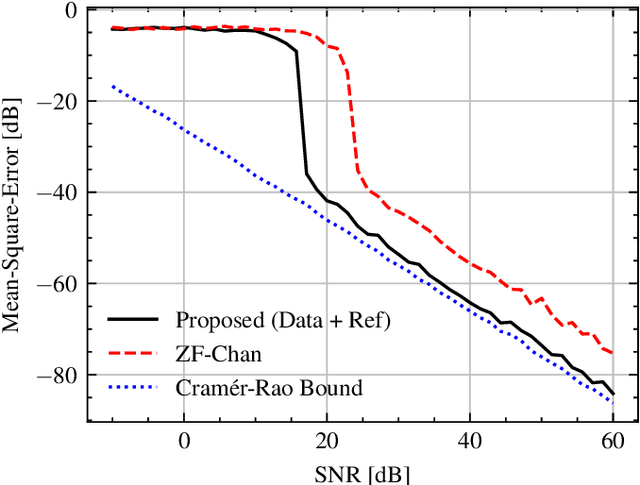

Abstract:The use of future communication systems for sensing offers the potential for a number of new applications. In this paper, we show that leveraging user data payloads in multi-node Orthogonal Frequency Division Multiple Access (OFDMA) networks for estimating target delay and Doppler-shift parameters can yield a significant advantage in SNR and addressable bandwidth. However, gaps in the frequency-time resources, reference signal boosting and amplitude modulation schemes introduce challenges for estimation at the sensing receiver. In this work, we propose a joint delay and Doppler-shift model-based estimator designed to address these challenges. Furthermore, we demonstrate that incorporating knowledge of the device model into the estimation procedure helps mitigate the effects of the non-ideal radar ambiguity function caused by amplitude-modulated user payloads and sparse reference signals. Simulation results demonstrate that the estimator achieves the theoretical lower bound on estimation variance.
Improving the Spatial Correlation Characteristics of Antenna Arrays using Linear Operators and Wide-band Modelling
Mar 26, 2024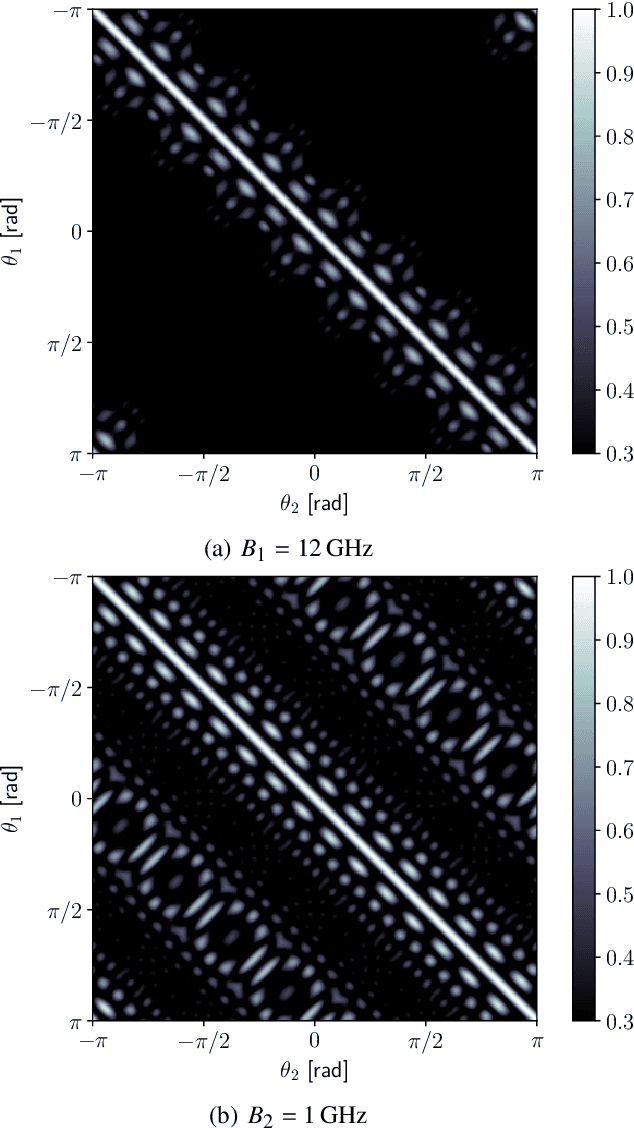

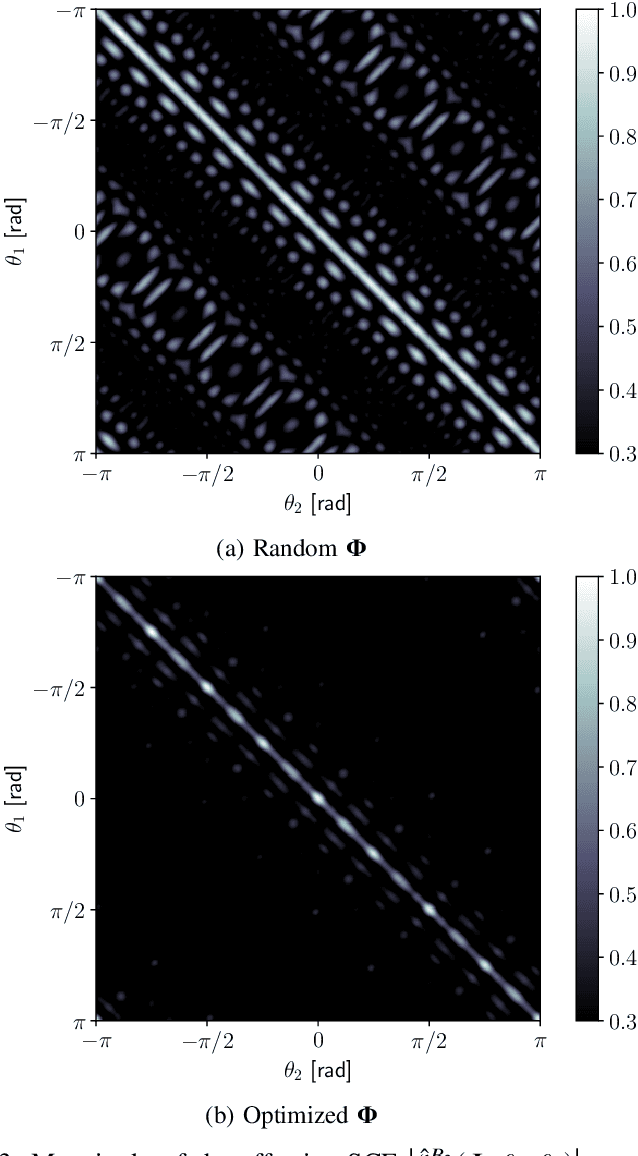
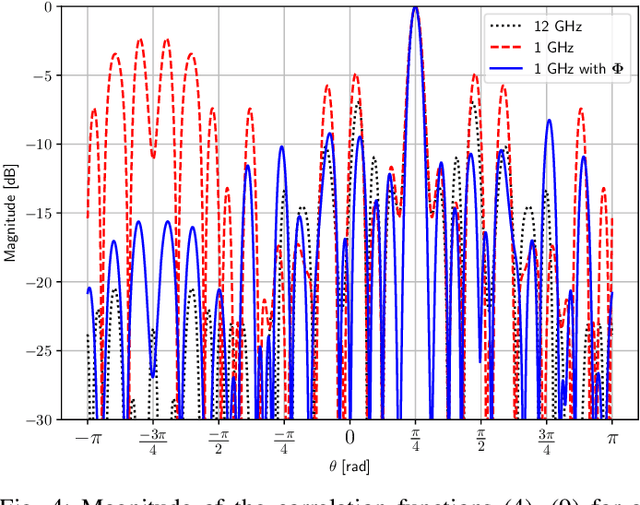
Abstract:The analysis of wireless communication channels at the mmWave, sub-THz and THz bands gives rise to difficulties in the construction of antenna arrays due to the small maximum inter-element spacing constraints at these frequencies. Arrays with uniform spacing greater than half the wavelength for a certain carrier frequency exhibit aliasing side-lobes in the angular domain, prohibiting non-ambiguous estimates of a propagating wave-front's angle of arrival. In this paper, we present how wide-band modelling of the array response is useful in mitigating this spatial aliasing effect. This approach aims to reduce the grating lobes by exploiting the angle- and frequency-dependent phase-shifts observed in the response of the array to a planar wave-front travelling across it. Furthermore, we propose a method by which the spatial correlation characteristics of an array operating at 33 GHz carrier frequency with an instantaneous bandwidth of 1 GHz can be improved such that the angular-domain side-lobes are reduced by 5-10 dB. This method, applicable to arbitrary antenna array manifolds, makes use of a linear operator that is applied to the base-band samples of the channel transfer function measured in space and frequency domains. By means of synthetically simulated arrays, we show that when operating with a bandwidth of 1 GHz, the use of a derived linear operator applied to the array output results in the spatial correlation characteristics approaching those of the array operating at a bandwidth of 12 GHz. Hence, non-ambiguous angle estimates can be obtained in the field without the use of expensive high-bandwidth RF front-end components.
Measurement Testbed for Radar and Emitter Localization of UAV at 3.75 GHz
Oct 13, 2022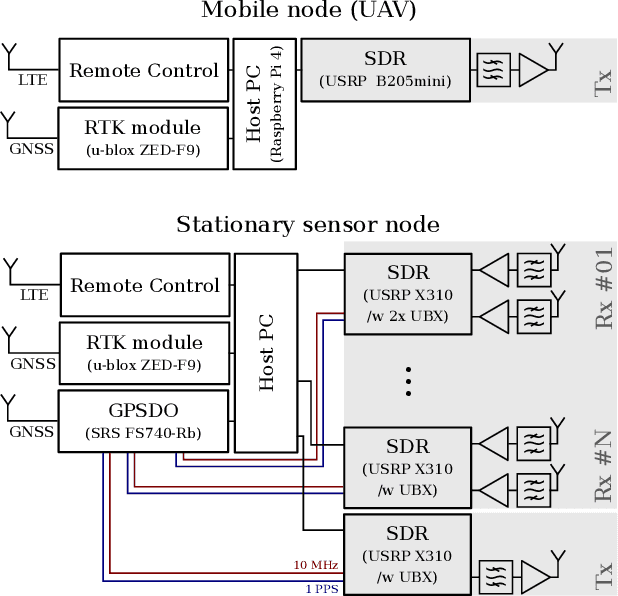
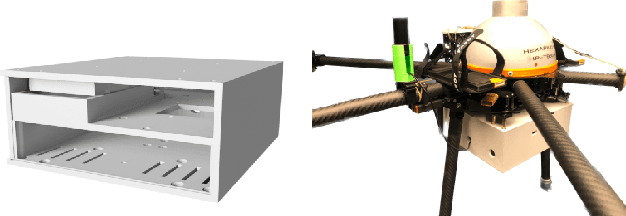
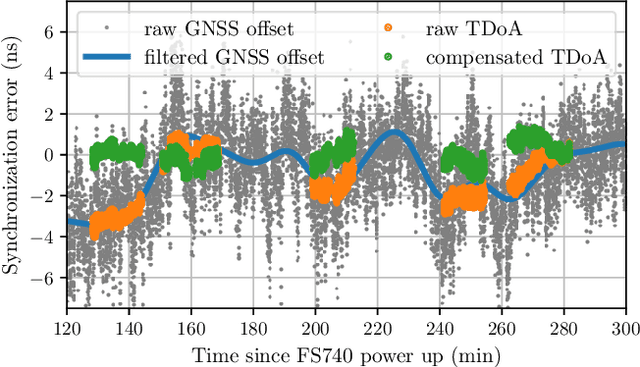
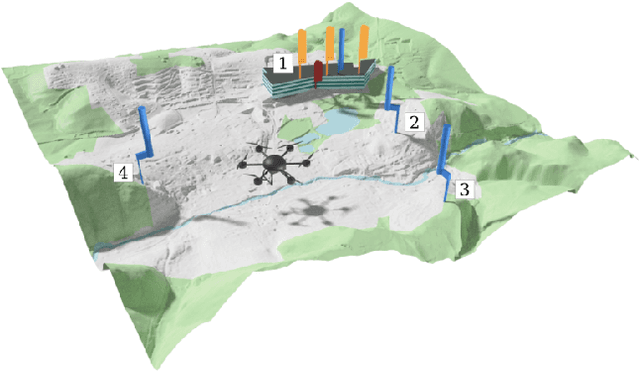
Abstract:This paper presents an experimental measurement platform for the research and development of unmanned aerial vehicles (UAVs) localization algorithms using radio emission and reflectivity. We propose a cost-effective, flexible testbed made from commercial off-the-shelf (COTS) devices to allow academic research regarding the upcoming integration of UAV surveillance in existing mobile radio networks in terms of integrated sensing and communication (ISAC). The system enables nanosecond-level synchronization accuracy and centimeter-level positioning accuracy for multiple distributed sensor nodes and a mobile UAV-mounted node. Results from a real-world measurement in a 16 km2 urban area demonstrate the system's performance with both emitter localization as well as with the radar setup.
 Add to Chrome
Add to Chrome Add to Firefox
Add to Firefox Add to Edge
Add to Edge